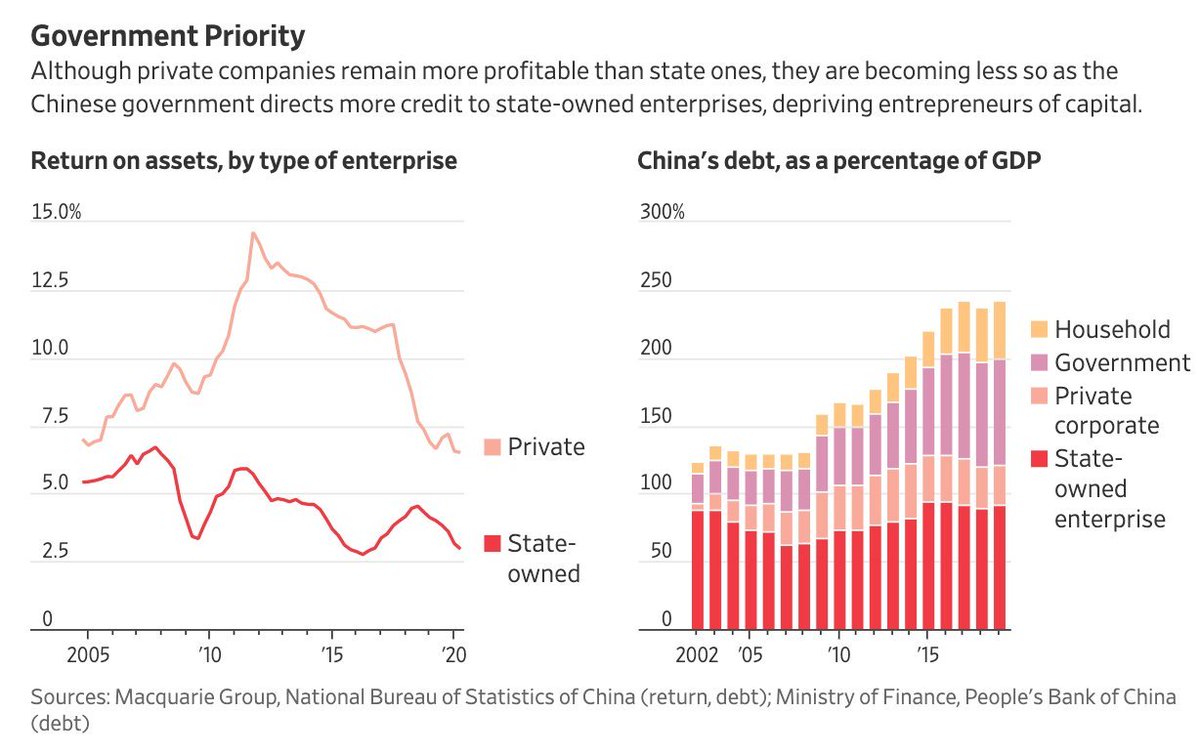1/7
Good article by @Lingling_Wei on how state control of the Chinese economy has increased in recent years in spite of assurances that Beijing wants to maintain the role of the private sector. While part of this trend may indeed be explained by... https://www.wsj.com/articles/china-xi-clampdown-private-sector-communist-party-11607612531
Good article by @Lingling_Wei on how state control of the Chinese economy has increased in recent years in spite of assurances that Beijing wants to maintain the role of the private sector. While part of this trend may indeed be explained by... https://www.wsj.com/articles/china-xi-clampdown-private-sector-communist-party-11607612531
2/7
a deepening conviction within the country’s leadership that markets and private entrepreneurs are unpredictable and not to be fully trusted, as Wei suggests, I would argue that it is also a necessary function of this stage of China’s growth model.
a deepening conviction within the country’s leadership that markets and private entrepreneurs are unpredictable and not to be fully trusted, as Wei suggests, I would argue that it is also a necessary function of this stage of China’s growth model.
3/7
This is something I've often argued would happen, and was the point I made in an article I wrote for the FT in April. As long as Beijing requires growth rates that are substantially higher than the economy’s real, underlying growth rate, I said in... https://www.ft.com/content/907740a4-854c-11ea-b6e9-a94cffd1d9bf
This is something I've often argued would happen, and was the point I made in an article I wrote for the FT in April. As long as Beijing requires growth rates that are substantially higher than the economy’s real, underlying growth rate, I said in... https://www.ft.com/content/907740a4-854c-11ea-b6e9-a94cffd1d9bf
4/7
the article, China has no choice but to expand the state’s presence in the economy. If the healthiest sources of demand – consumption, exports and private-sector investment – are together unable to generate the level of growth that Beijing considers to be politically...
the article, China has no choice but to expand the state’s presence in the economy. If the healthiest sources of demand – consumption, exports and private-sector investment – are together unable to generate the level of growth that Beijing considers to be politically...
5/7
necessary, only an expansion of the public sector can achieve the GDP growth rate that Beijing has targeted.
This is something we saw most obviously this year, when, thanks to the effects of the pandemic, private-sector demand actually contracted, leaving an expansion...
necessary, only an expansion of the public sector can achieve the GDP growth rate that Beijing has targeted.
This is something we saw most obviously this year, when, thanks to the effects of the pandemic, private-sector demand actually contracted, leaving an expansion...
6/7
of the public sector to account for more than 100% of growth. Next year I expect we'll see the private sector maintain its share of the economy as a partial rebound of private demand delivers all or most of the implicit GDP growth target, but thereafter I expect we will...
of the public sector to account for more than 100% of growth. Next year I expect we'll see the private sector maintain its share of the economy as a partial rebound of private demand delivers all or most of the implicit GDP growth target, but thereafter I expect we will...
7/7
revert to a rising state sector presence. Without a serious rebalancing of demand, in other words, as long as Beijing targets GDP growth of 3-4% or more, the state share of the economy, and of loans, must expand. There is no other way to achieve the growth target.
revert to a rising state sector presence. Without a serious rebalancing of demand, in other words, as long as Beijing targets GDP growth of 3-4% or more, the state share of the economy, and of loans, must expand. There is no other way to achieve the growth target.

 Read on Twitter
Read on Twitter


